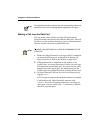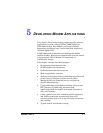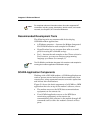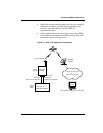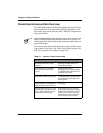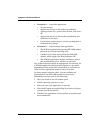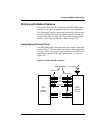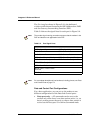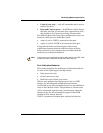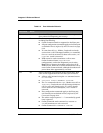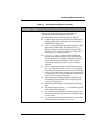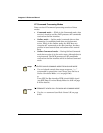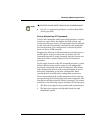
Integrator’s Reference Manual
5-6 80-99208-1 Rev. D
• Scenario 2 — A periodic application:
❑ No auto-answer.
❑ Application powers on the modem periodically
(perhaps once a day), queries host for data, then turns
off.
❑ Application powers on the modem periodically and
sends data to the host.
❑ Useful where power usage is critical, perhaps due to
limited battery charge.
• Scenario 3 — Asynchronous data application:
❑ The SCADA application keeps the GSP-1620 modem
powered up to accept incoming calls.
❑ A modem at the host server dials the GSP-1620
modem, which toggles the Ring Indicator (RI).
❑ The SCADA application decides whether to answer
the asynchronous call or whether to call back.
Any of these scenarios might be appropriate, for example, for
a SCADA application that monitors pipelines or gas wells,
depending on how much data is generated on-site and how
often the host application needs to access that data.
As these sample scenarios show, you can configure an
application for the GSP-1620 modem in many ways,
depending on factors such as the following:
• How you decide to use the modem ports
• Which operating systems you use
• How you want your application to operate
• How the SP wants to handle billing (by airtime or by byte;
contact your SP for details)
• Whether the application will use packet or asynchronous
data connections



